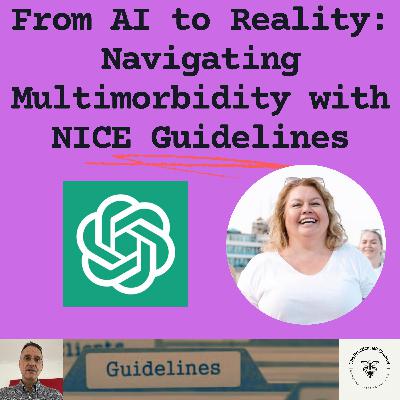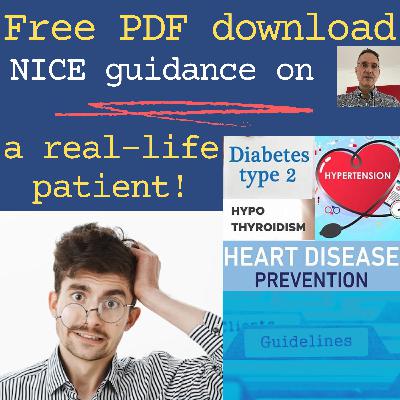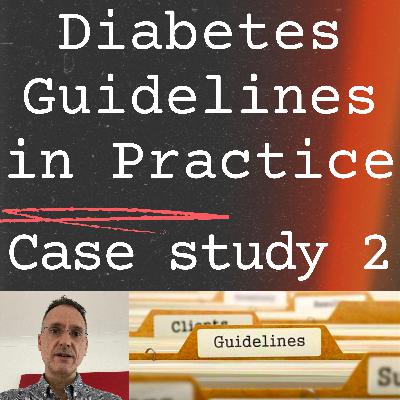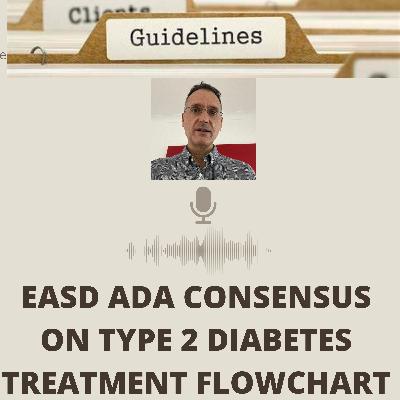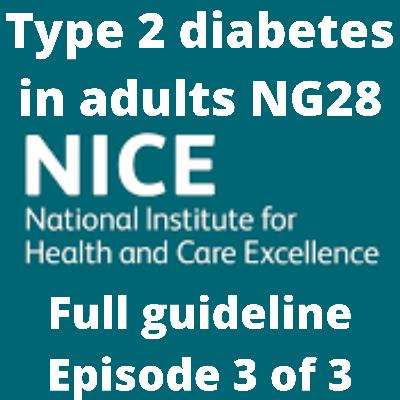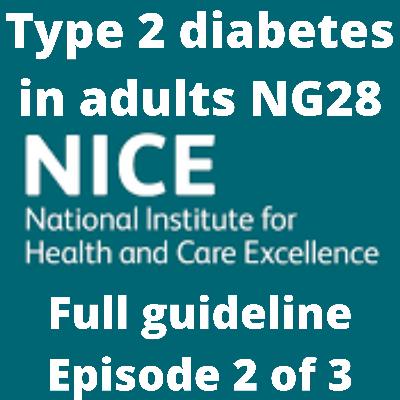From AI to Reality: Navigating Multimorbidity in diabetes with NICE Guidelines
Description
This episode makes reference to guidelines produced by the "National Institute for Health and Clinical Excellence" in the UK, also referred to as "NICE". Please note that the content on this channel reflects my professional interpretation/summary of the guidance and that I am in no way affiliated with, employed by or funded/sponsored by NICE.
My name is Fernando Florido and I am a GP in the United Kingdom. In today’s episode I look at a fictitious clinical case of a patient created by Chat GPT to see how the NICE guidelines could apply to it.
I am not giving medical advice; this video is intended for health care professionals, it is only my interpretation of the guidelines and you must use your clinical judgement.
There is a YouTube version of this and other videos that you can access here:
There is a YouTube version of this and other videos that you can access here:
- The Practical GP YouTube Channel:
- https://youtube.com/@practicalgp?si=ecJGF5QCuMLQ6hrk
The patient was created using the following Chat GPT prompt:
A) Provide a fictitious patient. Details that you should include are:
1) patient's medical information including:
· name
· age
· sex
· ethnicity
· BMI
· blood pressure
2) medical history- you must include:
· either one or two of the following poorly controlled conditions:
· type 2 diabetes
· hypertension
· dyslipidaemia,
· Asthma or COPD
· Any number of other medical conditions of your choice, along with whether they are well controlled or not – the medication for these conditions should appear in the next section “medications”
- Medications given:
· indicate whether the patient is currently taking medication for each medical condition or not.
· If medication is prescribed for a condition, indicate the specific drug(s) and their dosages. You may choose to prescribe one, two, or three drugs for each condition as appropriate.
3) State whether the patient tolerates the medication well or not, and if not, describe the side effect(s) and their severity.
4) blood test results (give a bulleted list but do not number them):
· HbA1c expressed in % and mmol/mol
· renal function tests to include creatinine (expressed first in µmol/L and then in mg/dL), eGFR, urea, sodium, and potassium (expressed in UK units first and then USA units)
· lipid profile expressed both in mmol/L first and then in mg/dL.
· If the patient has asthma, give the peak flow reading expressed as a percentage of their best or expected reading.
· If the patient has COPD, give the FEV1 reading expressed as a percentage of the predicted reading
· include any other relevant test results for the patient, expressing them in both UK and USA units. If the patient has hypothyroidism or takes levothyroxine medication, provide the results of their thyroid function tests, including both T4 and TSH levels, in both UK and USA units. Also, include the normal range for these investigations.
B) Provide the patient's cardiovascular risk using the QRISK2 tool, calculated as a percentage of the likelihood of experiencing a cardiovascular event over the next 10 years.
C) At the end of the patient information, ask: 'What treatment recommendations would you make?' – do not make recommendations yourself
D) Do not include a disclaimer that the patient is fictitious.
The NICE hypertension flowcharts can be found here:
- Website: https://www.nice.org.uk/guidance/ng136/resources/visual-summary-pdf-6899919517
- Download: https://1drv.ms/b/s!AiVFJ_Uoigq0lgKKs3AbARF_VLEI?e=KRIWrn
The full NICE Guideline on hypertension (NG136) can be found here:
- Website: https://www.nice.org.uk/guidance/NG136
- Download: https://1drv.ms/b/s!AiVFJ_Uoigq0lgP6nFVHRypL9fdj?e=Jbtgus
The full NICE Guideline on Type 2 diabetes (NG28) can be found here:
· https://www.nice.org.uk/guidance/ng28
The full NICE guidance on cardiovascular disease risk reduction (CG181) can be found here:
· https://www.nice.org.uk/guidance/cg181
The full NICE guidance on asthma (NG80) can be found here:
· https://www.nice.org.uk/guidance/ng80
The full NICE guidance on depression in adults (NG222) can be found here:
· https://www.nice.org.uk/guidance/ng222
The full guidance on obesity (CG189) can be found here:
· https://www.nice.org.uk/guidance/cg189
Thumbnail photos-
From: www.freepik.com
· Image by Freepik: Image by a href="https://www.freepik.com/free-photo/excited-young-friends-running-beach_9057871.htm#page=2&query=45%20year%20old%20obese%20woman&position=10&from_view=search&track=ais"Freepik/a
Intro / outro music: Track: Halfway Through — Broke In Summer [Audio Library Release]
- Music provided by Audio Library Plus
- Watch: https://youtu.be/aBGk6aJM3IU
- Free Download / Stream: https://alplus.io/halfway-through
Transcript
Hello everyone. My name is Fernando and I am a GP in the United Kingdom. Today we are looking at a fictitious patient generated by Chat GPT with a view to looking at the NICE guidelines from a practical perspective.
If you would like to know the Chat GPT prompt that I have used, you can find it in the episode description.
Right, so let’s jump into it.
Patient Information:
· Name: Sarah Davis
· Age: 45
· Sex: Female
· Ethnicity: Caucasian
Examination:
· BMI: 32 (Obese)
· Blood Pressure: 153/91 mm Hg
Medical History:
· Type 2 Diabetes
· Hypertension
· Dyslipidemia
· Asthma
· Obesity
· Depression
Medications:
· Metformin 1000 mg twice daily
· Gliclazide 80 mg once daily
· Amlodipine 10 mg once daily
· Indapamide MR 1.5 mg once daily
· Atorvastatin 20 mg once daily
· Salbutamol inhaler as needed
· Sertraline 50 mg once daily
Medication Tolerance:
· Sarah tolerates her medications well. She has not reported any significant side effects.
Blood Test Results:
· HbA1c: 8.5% (69 mmol/mol)
· Renal Function:
o Creatinine: 90 µmol/L (1.02 mg/dL)
o eGFR: 91 mL/min/1.73m²
· Lipid Profile:
o Total Cholesterol: 5.2 mmol/L (200 mg/dL)
o LDL Cholesterol: 3.0 mmol/L (116 mg/dL)
o HDL Cholesterol: 1.2 mmol/L (46 mg/dL)
o Triglycerides: 2.5 mmol/L (220 mg/dL)
Cardiovascular Risk (QRISK3):
· Sarah's 10-year cardiovascular risk is estimated at 18%.
So, what treatment recommendations would we make?
Although there is a lot that we can do from a lifestyle perspective, we will focus on the drug treatment only.
Right, let’s start with her diabetes, which is poorly controlled with an hba1c of 8.9% or 74 mmol/mol. Sarah is on metformin 1gr BD and gliclazide 80 mg OD and we know she is at high risk of cardiovascular disease with a QRISK3 of 18%.
NICE says

